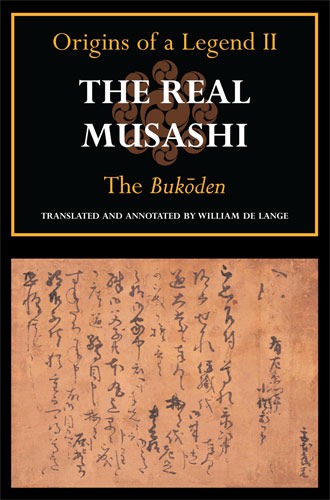Introduction
No swordsman in Japanese history is so revered and celebrated as Miyamoto Musashi. In Japan alone close to a thousand works have taken Musashi as their subject, many in the form of novels, the first one appearing as far back as the turn of the eighteenth century. Even now, more than four and a half centuries after his last exploits, hardly a year passes by without the lone swordsman turning up in some newly released film or television adaptation.
Sadly, amid this veritable deluge of books, comics, films, television soaps and docudramas, little room is given to the old denki, the early biographies that were written by men who, though they may not have known Musashi alive, faithfully recorded what had been passed down to them by men who had. Given his huge popularity, many of the more human aspects of this medieval warrior have been relegated to the margins in favor of a highly polished and sanitized portrayal of his undisputed fencing skills. The resulting image is one of an invincible war-machine, a two-dimensional and hollow caricature, bereft of the personal traits that make all of us human.
It is all the more exiting, then, to return to these earliest of records and to find behind the myth a man of real flesh, who in spite of his unparalleled mastery of the sword has all the traits and idiosyncrasies to which all of us are prone.
The aim of this series is to return to these earliest of records in order to unravel some of the legend and thereby recapture the real character of this enigmatic medieval swordsman. In following this rarely trodden trail the reader will soon find that the newly gained insights into Musashi’s personality do not in the least diminish his stature but only serve to make him a more rounded character, a human being with whom we can all identify.
The Bushū denraiki is the earliest such record still in existence. Completed in 1727 by Tachibana Minehide, the fifth generation master of Musashi's Niten Ichi school of fencing, it is the most reliable record of Musashi's life and exploits outside those from the hand of the master swordsman himself. Now, after three centuries, Minehide's insight into this enigmatic and solitary swordsman are available to the English reader. His text throws a new and refreshing light on many aspects of especially Musashi's early life—his troubled relations with his father, his first battle experience during Japan's period of unification, the sad death of his illegitimate child, and of course his legendary duel on Ganryū island. For those interested in the sword culture of Japan, this true story of its most iconic figure is essential reading.
Lists of historical periods, castles, temples, shrines, battles, and rebellions, glossary, bibliography
Japanese history / Swordsmanship / Martial arts
Published by FLoating World Editions / ASIN: B00960UBOA

The Bukōden was completed in 1755 by Toyoda Masanaga, senior retainer to the Nagaoka, a clan closely involved in the events of Musashi's later life. Masanaga's work ranks with the Bushū denraiki as one of the most reliable records of Musashi's life and exploits outside those from the hand of the master swordsman himself. Now, for the first time in two-and-a-half centuries, Masanaga's insight into this enigmatic and solitary swordsman is available to the English reader. It throws a new and refreshing light on many aspects of especially Musashi's later life—his adoption of Iori, his return to Kyushu in 1634, and of course the gestation of his great work on the philosophy and art of Japanese swordsmanship, the Book of Five Rings.
Lists of historical periods, castles, temples, shrines, battles, and rebellions, glossary, bibliography
Japanese history / Swordsmanship / Martial arts
Published by FLoating World Editions / ASIN: B009N1XMSE
The Bushū denraiki and the Bukōden are not the only historical records on Miyamoto Musashi. This book presents translations of nearly two dozen texts describing important events in Musashi’s life, dating from the mid-seventeenth to the late-nineteenth century. They include the Tomari jinja munefuda, traceable to the swordsman’s adopted son Iori, and the Numata kaki, written by the keeper of the castle where Musashi stayed at the time of his famous duel on Ganryu Island.
Now the insight these works offer into this enigmatic and solitary swordsman is available to the English reader. It throws a new and refreshing light on many aspects of Musashi's life—his duels with the members of the Yoshioka clan, the events leading up to his duel with Sasaki Kojirō, his heroic role in the siege of Osaka castle, his contribution to the reconstruction of Akashi castle, and his remarkable artistic talents.
Lists of historical periods, castles, temples, shrines, battles, and rebellions, glossary, bibliography
Japanese history / Swordsmanship / Martial arts
Published by FLoating World Editions / ASIN: forthcoming
